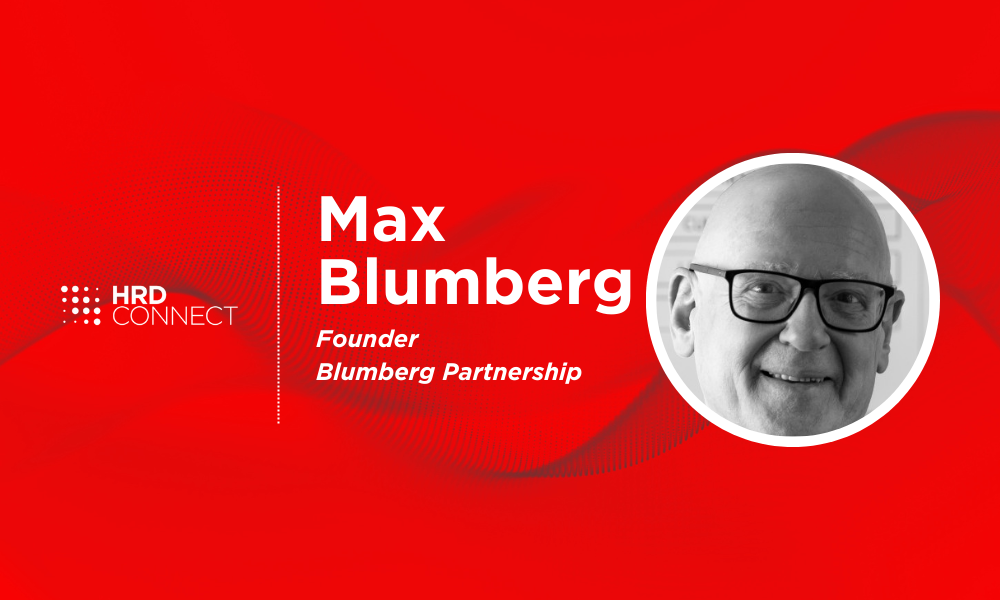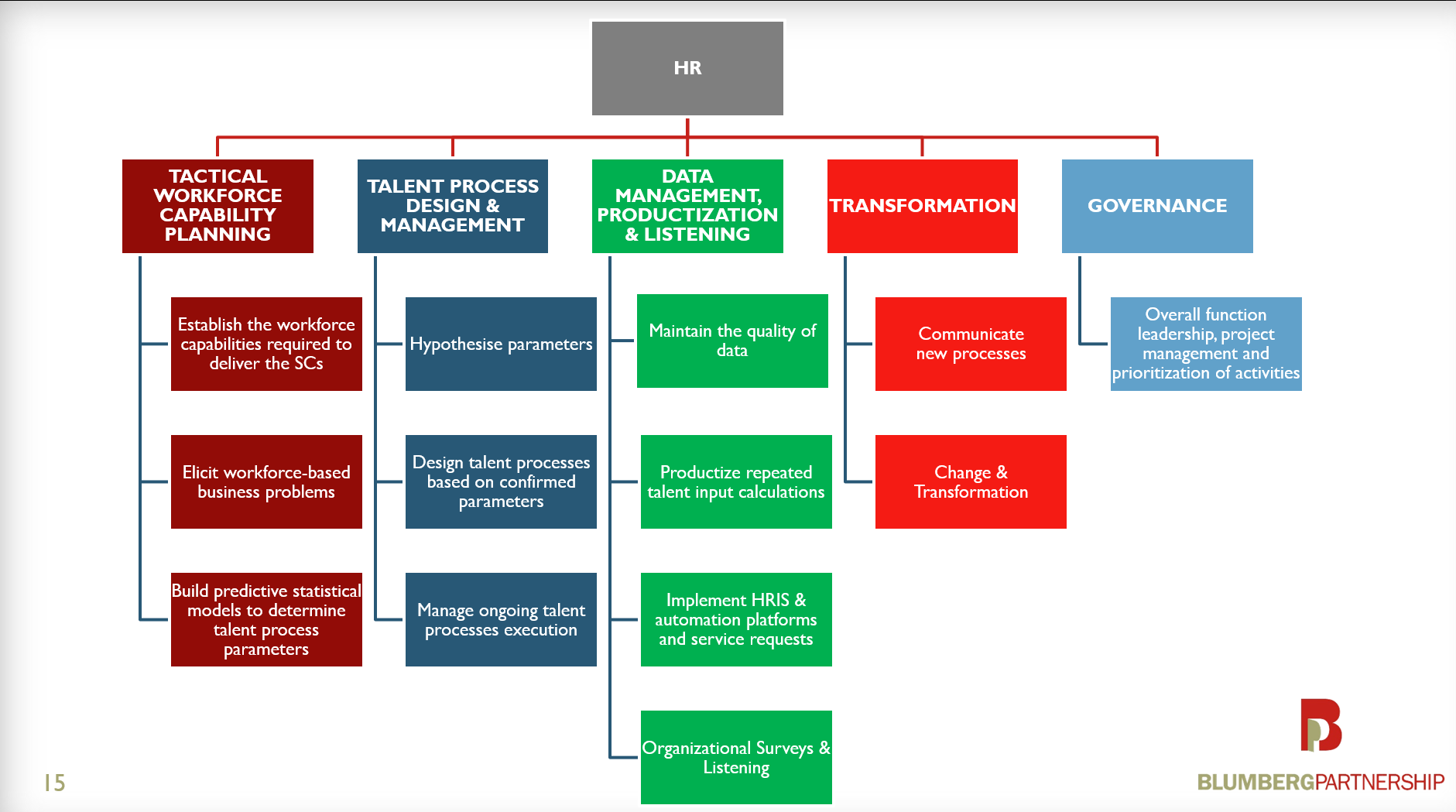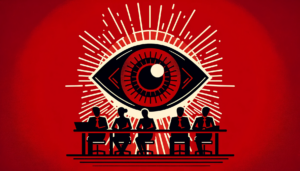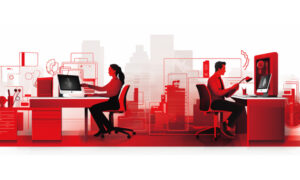HRBPs reimagined: A data-enabled model for business-driven HR
- 6 Min Read
A new model for business-driven HR that helps organizations make informed decisions, improve employee engagement, and achieve better business outcomes.
- Author: Benjamin Broomfield
- Date published: May 4, 2023
- Categories

The HR Business Partner (HRBP) model was first introduced by Dave Ulrich in the late 1990s. It aimed to create a more strategic and business-focused HR function by embedding HR professionals within business units. But it’s no secret that the business landscape has changed. Traditional HR operating models, such as HRBPs, fall short in utilizing data as an evidence-based tool to aid in decision-making. If the HR profession is to move from an administrative partner to a strategic driver, we need to redesign our tried and tested models for HR. Max Blumberg proposes a business-driven HR operating model that is proactive in identifying and solving business problems. In this Q&A for HRD Connect, we unpack this new model and consider how it can draw on the shortcomings of traditional models to reposition HR as a strategic partner in the new business landscape.
1. Where do traditional HR operating models such as HRBPs fall short in the new business landscape?
Max Blumberg: Well, I’m a great fan of the original Ulrich model. But he would be the first to say he created the model in 1997. We didn’t have anywhere near the level of data available today and many business leaders still viewed HR as an administrative function. We did not design these operating models to use data as an evidence-based tool to help with decisions. They were not business-oriented but administration or process-oriented. There was not much science to creating workforce capabilities.
2. What are the divisions and job roles that would exist under a new business-driven HR operating model? How would these divisions interact with each other?
Max Blumberg: The business-driven HR model started life as a people analytics model and rapidly morphed into an HR model. Keep this in mind as you look at each of the functions in turn. For example, the total workforce capability planning module isn’t necessarily workforce planning in the way we would normally do it. It’s about people going out into the business and proactively finding out what they need, before bringing these insights back to a data science team to improve workforce capabilities.
We also replace business partners with consultants. Consultants historically connect with business leaders rather than other people within HR. They’d ask, do we have too many locations? Are our sales down? They might discover we’re not recruiting the right people. They will recommend the kind of people that we need to recruit.
But we’ve separated the development and the implementation of the processes, from the people who do the analysis and decide what needs to go into those processes. If the workforce planning function finds people that we need to recruit, the implementation function creates a new recruitment process that uses those parameters.
3. Can you share the core differences between business-driven HR and existing HR operating models?
Max Blumberg: Firstly, this model can be used for any function. All you have to do is change the processes from people processes to financial processes or the capabilities, from workforce capabilities to marketing capabilities.
It’s also far more proactive in going after and looking for business problems. We know there are a million ways to improve a recruitment process. But once you have those million ways, what is going to have the best possible impact on the bottom line? This is where we have a separate implementation team.
Lastly, business-driven HR clearly separates the process of modeling to show the parameters that we need for succession planning, career development, or recruitment. So, from the data engineering side, we see data as being a resource used by data scientists. The data function simply exists to make sure the right clean, accurate data is available. So, they’re not data scientists. They are data engineers or data experts.
4. What would a sample implementation look like for business-driven HR?
Max Blumberg: Say a business consultant has discovered innovation is low. It’s influencing the bottom line. The consultant would hand it back to data scientists who would build a model to discover the parameters the company could tweak within the people process. For example, it could be hiring people with specific personality traits.
They hand the parameters back to the implementation team who are the experts in recruitment. The implementation team bakes the parameters, or traits, into the recruitment process. The process then looks for the right person and creates a career path that emphasizes innovation.
5. And what are some further implementation best practices for senior HR leaders making business-driven HR a reality at their organization?
Max Blumberg: Firstly, consider whether you and your people are really business oriented. Not everyone needs an MBA or a business degree, but as we move into an age where AI is automating traditional work, you can’t automate the ability to spot financial business problems or issues with productivity. If you want to survive in HR when AI automates lots of processes, you’ll need to make sure you and your team understand how businesses operate. A lot of people go into HR because they love people. This model isn’t at odds with that, but you have to complement your love of people with a good knowledge of business.
6. How does this new model shift the day-to-day work of HR and business leaders?
Max Blumberg: 80% of organizations live from one crisis to the next! They miss the luxury of taking time to think strategically about what problems to seek out and solve. It shifts workforce planning and alignment with business strategy from reactive to proactive. A proactive approach that shifts away from fighting fires is a huge difference. Business-driven HR enables you to run the scenario planning and proactive problem-solving that the best companies do.
7. Is the business-driven HR model able to evolve and adapt over time to avoid becoming outdated?
Max Blumberg: I’d love to be able to give some guarantees. But you can’t say what’s coming around the corner. The whole idea of models like this is that they are an adaptation or reaction to what’s going on in the environment. The world changed over the last 20 years to become much more data-oriented. But the HR operating models didn’t.
The parts of the model that are likely to change are related to data science because they will be automated. Right now, everyone’s talking about ChatGPT. So, keep up to date with the very latest in AI if you want to protect yourself. But I would say we’ve deliberately designed it to be as adaptable as we can. I think the implementation role in the model is safe, to the extent that we are always going to need people to implement the processes because there’s an emotional component. But the answer is to keep your eye on the environment on the horizon and be ready for rapid change.
________________
Blumberg Partnership founder, Dr Max Blumberg, worked as a management consultant at Accenture in the US and South Africa before successfully founding and exiting a technology start-up followed by a PhD at Goldsmiths, University of London.
Today he lends his expertise and experience to the Blumberg Partnership, focusing on global sales force transformation and people analytics/automation.









